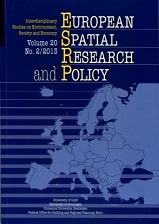The Model’s Limitations What ‘Urban Sustainability’ for Port-au-Prince? European urban projects put to the test by the Haitian city
The Model’s Limitations What ‘Urban Sustainability’ for Port-au-Prince? European urban projects put to the test by the Haitian city
Author(s): Marie RedonSubject(s): Essay|Book Review |Scientific Life
Published by: Wydawnictwo Uniwersytetu Łódzkiego
Keywords: Port-au-Prince; Haiti; urban sustainability; state; NGO; governance; emergency; development; model; European Union
Summary/Abstract: In 2010, the capital of Haiti was devastated by an earthquake that seemed to provide the opportunity for the country, as well as foreign donors, to put Port-au-Prince on the track of an ordered, planned urban policy, in line with its multi-risk context. Prior to the earthquake, the lack of a legal framework for urban planning was called into question. In its wake, speeches making the capital the emblem of a new ‘sustainable’ start have flourished. The European Union, the main donor of funds for Haiti, has embarked on a programme of support for reconstruction, but with what results three years later? The paper proposes to approach the limitations of the ‘sustainable city’ model, conditioned by spatiotemporal continuity. The systemic functioning underlying urban sustainability clashes with the context of Port-au-Prince, where spatial division and temporal discontinuity are determinant. In spite of itself, aid and its operation by projects, seems to enforce urban fragmentation and dissonance.
Journal: European Spatial Research and Policy
- Issue Year: 20/2013
- Issue No: 2
- Page Range: 41-56
- Page Count: 16
- Language: English

